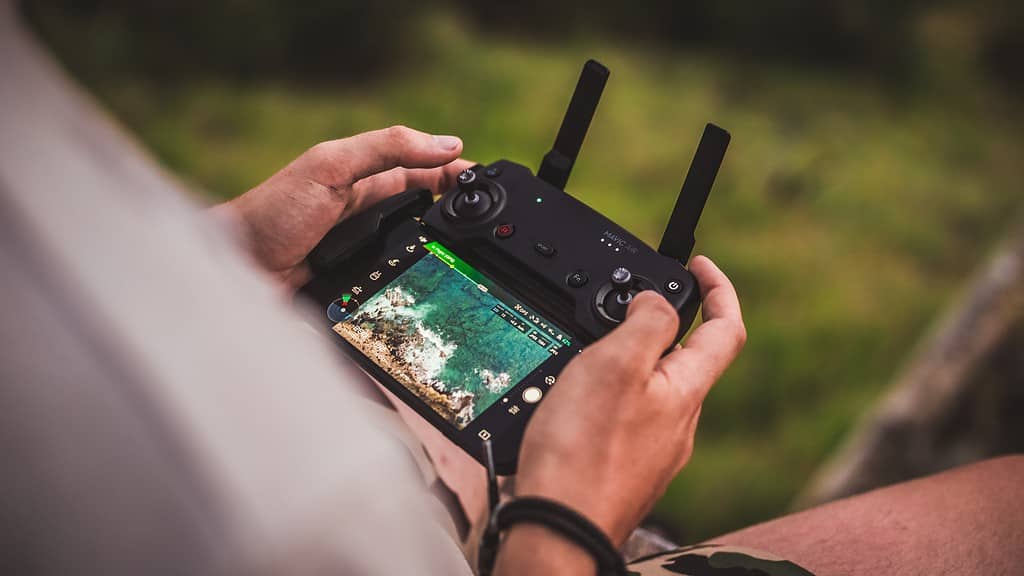Methane emissions from landfills pose a growing environmental threat as decomposing waste releases rising amounts of this potent greenhouse gas.
However, current methods of monitoring landfill methane through manual walking inspections are laborious, inconsistent, and present safety risks.
This raises the question – can advanced technology provide a better approach?
Recently, the EPA answered yes by approving drone-based monitoring.
The EPA’s decision signals a new era in emissions monitoring, enabling drones to transform landfill surveillance.
The Methane Menace
Methane emissions from landfills are a major environmental concern. Decomposing food waste and other trash releases thousands of tonnes of this potent greenhouse gas.
- U.S. landfills released an estimated 122.6 million metric tons of carbon dioxide equivalent (MMTCO2e) of methane into the atmosphere in 2021, accounting for 16.9% of total U.S. methane emissions.
- Municipal solid waste (MSW) landfills are the third-largest source of human-related methane emissions in the United States.
- In 2021, U.S. municipal waste landfills released 3.7 million metric tons of methane.
- Globally, landfill waste is responsible for about 11% of methane emissions and is expected to increase about 70% by 2050.
The Sky’s the Limit: Drones Take Landfill Inspections to New Heights
Under current EPA regulations, landfill operators must manually inspect for methane leaks and exceedances (exceeding a limit or amount set by recommended practice or regulation) along the huge expanses of their facilities.
Typically, an operator hikes the perimeter and interior carrying a handheld methane detector to check for issues.
This manual process is incredibly labor intensive, requiring inspectors to traverse up to 15 miles of challenging terrain in varying weather conditions.
It’s also prone to inconsistency, with the potential for missed spots and variability between operators. Plus, the nature of landfills poses safety risks like slip hazards, wild animals, and exposure to harmful gases.
Sensing a smarter solution, Michigan-based Sniffer Robotics LLC. proposed an alternative: using drones equipped with methane detectors to automate monitoring.
Their unmanned aerial system (UAS) carries a specialized methane sensor payload as it flies programmed routes across the landfill at a consistent above-ground level.
The UAS detects areas of elevated methane and transmits readings back to the operator. After identifying hotspots, the operator conducts targeted manual ground inspections of those high-priority zones.

EPA Review Confirms Drones Deliver Results
But would this new drone-based methane detection approach actually perform better than human inspectors?
Extensive data convinced the EPA that the answer is a resounding yes!
Sniffer conducted side-by-side comparisons of manual vs. drone monitoring at multiple landfills. Results showed the UAS technique detected 60% more elevated methane areas and over twice as many true exceedances as traditional methods.
Cleared for Take-Off: EPA Approves Alternative Monitoring Method
Based on this performance data, the EPA officially approved Sniffer’s drone-based approach as an alternative test method called OTM-51.
While some manual inspection is still required, landfill operators can now deploy drones to replace most human traverses.
This approval allows drones to assume new pollution patrol roles across industries.
It means improved safety, efficiency, and emissions detection for landfill managers.
Drone Service providers like Sniffer can now offer turnkey monitoring services to tap this lucrative opportunity.
More frequent and effective monitoring for the EPA provides better oversight and public health protection.
It’s a win-win-win!
Lift Off to a Greener Future
Drones have already revolutionized activities like photography, delivery, and surveying. Now they’re poised to also transform environmental monitoring. OTM-51’s approval enables these robots to rise to the occasion, taking our landfill inspections to new heights!
How To Get Started with Drone-Based Landfill Monitoring
Ready to take your landfill inspections airborne? Here are 5 steps to begin reaping the benefits of drone-based monitoring:
- Review EPA Approval OTM-51 – Thoroughly read through the EPA’s approval letter and alternative method OTM-51 to understand all requirements and procedures for drone-based monitoring. You can find both in a single PDF on the EPA Site here: ALT-150 Approval to Use Unmanned Aerial System Application as an Alternative to Method 21 for Surface Emission Monitoring of Landfills (pdf)
- Decide on a Build vs. Buy Drone Service Strategy – Will you build your own solution or buy a service? If you operate in the USA, Sniffer Robotics has chosen to offer the solution as a service. If you operate outside the USA, they will sell the technology to alternate providers, and you may convince them to sell you a stack. They will not sell you the technology. If you want to create an alternative using a different methane detection approach, you must submit measurements to the EPA for approval. For a more comprehensive discussion of the buy versus build approach, check out the section titled Should you build your own or buy drone inspection services? in our article: The Future is Here: A Deep Dive into Drone Inspection Services
- Integrate your Drone Services Solution – Research providers of UAS methane detection services like Sniffer Robotics. Evaluate experience, capabilities, and reporting. If you choose the OTM-51 Method in the USA, Sniffer Robotics is your service provider.
- Develop Detailed Flight Plans – Work with your provider to develop flight grids and routes that comprehensively cover your landfill following OTM-51 specifications.
- Schedule Quarterly Monitoring – Integrate drone monitoring into your regular quarterly emissions inspection schedule. Coordinate timing, staffing, and reporting deliverables.
- Analyze and Report Results – Review drone-collected emissions data, including identified hotspots. Mark any exceedances and include data in quarterly reports to the EPA. Landfill facilities must include a copy of the Approval letter and method with each quarterly report when using OTM-51.
Following these steps will ensure you implement drone-based monitoring in compliance with EPA guidelines while leveraging the game-changing benefits of UAS technology.
Contact us if you need an introduction to a qualified drone service provider equipped to support methane detection for your landfill!

Brad Nichols
Partner, CTO
30-plus years focused on mission-critical technology and operations. 5+ Years experience with Drone Solutions.

Leon Shivamber
Partner, Chair
Advisor, Entrepreneur, Strategist, & Transformation Agent. Over a decade of experience with Drone Technology and Solutions.
